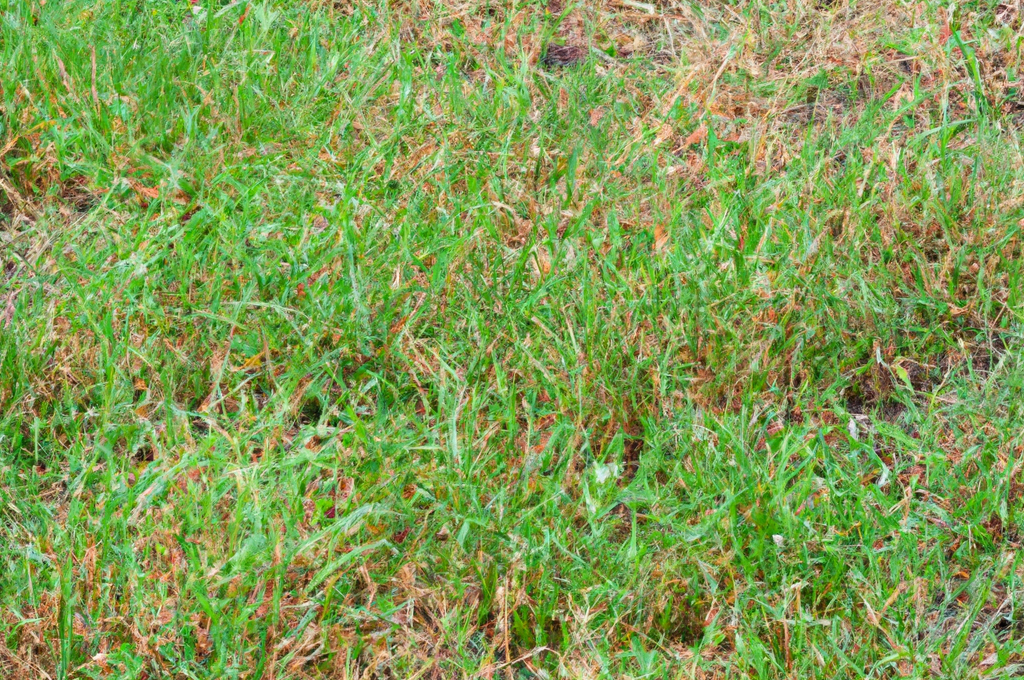Are you tired of staring at those unsightly bald spots on your lawn? You may be tempted to sprinkle some grass seed and call it a day. After all, it seems like a quick and easy solution. However, is it really a long-term fix?
The truth is, there are both pros and cons to seed sprinkling. While it may save you time and allow for spot-treatment, seed sprinkling can also lead to weaker root development and require more maintenance in the long run. Without proper preparation and care, your lawn may not look as lush and green as you had hoped.
But don’t worry, in this article, we’ll discuss the timing and conditions necessary for successful grass growth, as well as tips for proper soil preparation and maintenance to ensure a fantastic-looking lawn. So, let’s dive in and find out if seed sprinkling is a quick fix or a long-term failure.
Quick Summary
- Sprinkling grass seed on a lawn without proper preparation can lead to poor long-term success.
- Late winter or early spring is a safer time to lay grass seed, and cool-season grass variety seeds will go into dormancy when exposed to cold conditions.
- Proper soil preparation is necessary for successful grass seed growth, and quick tips include breaking up soil, providing cover, and monitoring water levels.
- Vigilant maintenance is needed to maintain good moisture until the grass establishes, and following the tips in the guide will help keep a lawn looking fantastic.
Pros and Cons
You might be tempted to just sprinkle grass seed on your lawn, but it’s important to consider the pros and cons first.
On one hand, sprinkling seed can be an easy spot treatment that saves you time. You can simply toss seed onto bare spots and hope for the best.
On the other hand, if you don’t give your grass the proper care it needs, you could end up with a weak and patchy lawn. Seed drying out and weaker root development can lead to more maintenance needed down the line.
While sprinkling seed may seem like a quick fix, it’s important to weigh the pros and cons before making a decision. Easy spot treatment and little time may be tempting, but it’s important to consider all factors before deciding if sprinkling seed is the right choice for you.
Timing and Conditions
For successful grass growth, it’s important to consider the timing and conditions, such as laying grass seed in late winter or early spring and providing perfect climate and soil conditions. Proper preparation of the area where the seed will be laid is also crucial to ensure the long-term success of the grass.
Here are some tips to keep in mind:
- Breaking up the soil and removing debris will create a better environment for the seed to grow.
- Providing a layer of enriched topsoil or straw will protect the seed from birds and animals that might eat it.
- Monitoring the water levels with a moisture meter and maintaining good moisture until the grass establishes will ensure the seedlings receive adequate hydration.
Remember, the best time to sow grass seed is in late winter or early spring, when the conditions are ideal for growth. Proper preparation of the area where the seed will be laid will ensure the long-term success of the grass. By following these tips, you can create a beautiful and healthy lawn that will last for years to come.
Tips for Success
To achieve a fantastic-looking lawn, it’s necessary to properly prepare the soil and provide adequate moisture for the seedlings to establish. Tossing seed on top of bald spots without prepping the area correctly can lead to failure. Quick tips for setting grass seed include breaking up soil, providing cover, and monitoring water levels. Using a moisture meter is helpful for monitoring water levels. Topping seed with enriched topsoil or straw can protect it from birds and animals. Vigilant maintenance is needed to maintain good moisture until the grass establishes. Seeds can be lost to birds, squirrels, rain, or wind before germination. Germination can take several weeks, so timing is important.
To ensure success, it’s essential to follow proper soil preparation techniques. Breaking up soil and providing cover will help the seedlings establish a healthy root system. Monitoring moisture levels is also important to avoid over or under watering. Here’s a helpful table outlining the do’s and don’ts of prepping soil and monitoring moisture levels:
| Do’s | Don’ts | Effects |
|---|---|---|
| Use a rake or tiller to loosen soil | Skip soil preparation | Poor root development |
| Add enriched topsoil | Overwater or underwater | Weaker, sparser growth |
| Spread seed evenly | Sprinkle seed randomly | High rate of failure |
| Cover with straw or topsoil | Allow seed to dry out | Bird and animal damage |
| Monitor moisture levels | Neglect watering or overwater | Uneven growth, weak roots |
By following these tips and properly prepping your soil, you can increase your chances of success when spreading grass seed. Remember to monitor moisture levels and provide adequate cover to protect the seedlings from birds and animals. With proper care, you can achieve a beautiful, healthy lawn.
Frequently Asked Questions
What types of grass seed are best for different climate conditions?
Seed selection and soil preparation are key to successful grass growth. Understanding sun exposure and drainage are factors in choosing grass seed for different climate conditions. Keep it simple for a safe and thriving lawn.
How often should newly planted grass seed be watered?
To properly water newly planted grass seed, water deeply and frequently enough to keep the soil consistently moist. Ideal time to plant is in late winter or early spring. Vigilant maintenance is important for successful growth.
What are some natural methods for protecting grass seed from animals and birds?
Protecting your grass seed from animals and birds can be done naturally by using a variety of methods such as netting, scarecrows, and planting seed types that are less attractive to them. Compatibility with the seed type is important for successful growth.
Can over-fertilization harm newly planted grass seed?
Over-fertilization can harm newly planted grass seed by causing nutrient imbalance and preventing erosion. Avoid using too much fertilizer and follow instructions carefully to ensure healthy and successful growth.
How long does it typically take for grass seed to grow into a fully established lawn?
Factors affecting seed germination and the importance of soil preparation significantly impact how long it takes for grass seed to grow into a fully established lawn. Vigilant maintenance, proper watering, and ideal climate conditions can take up to several weeks to achieve a fantastic-looking lawn.








